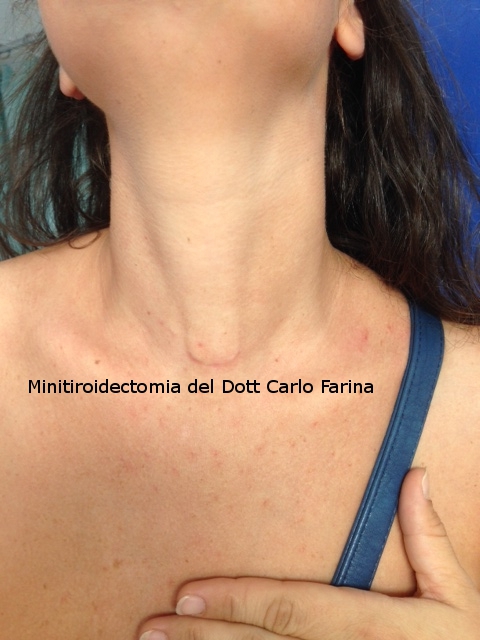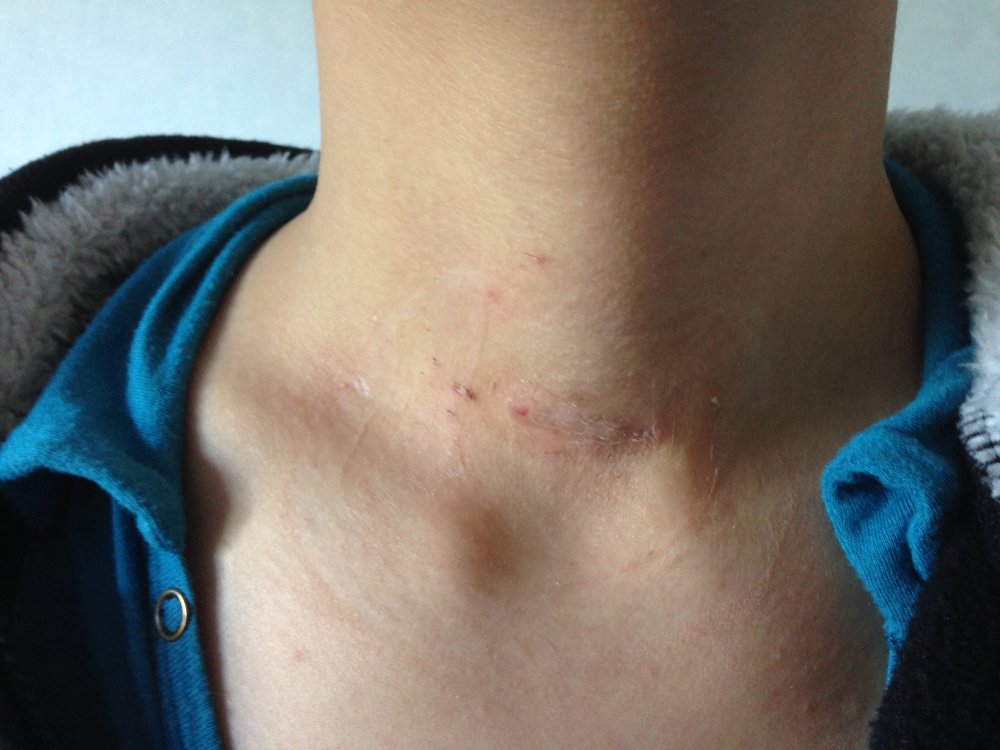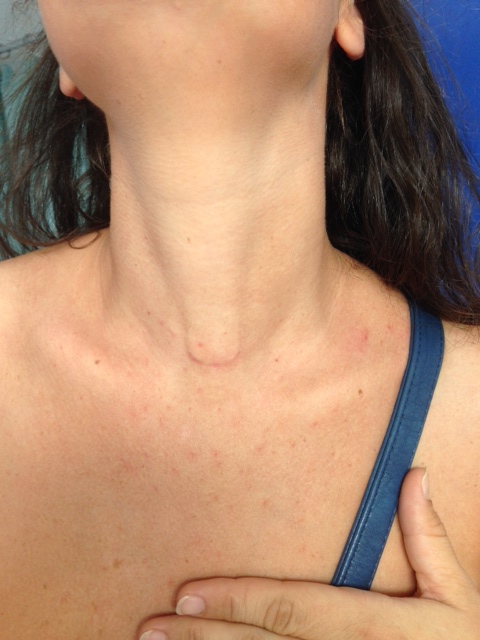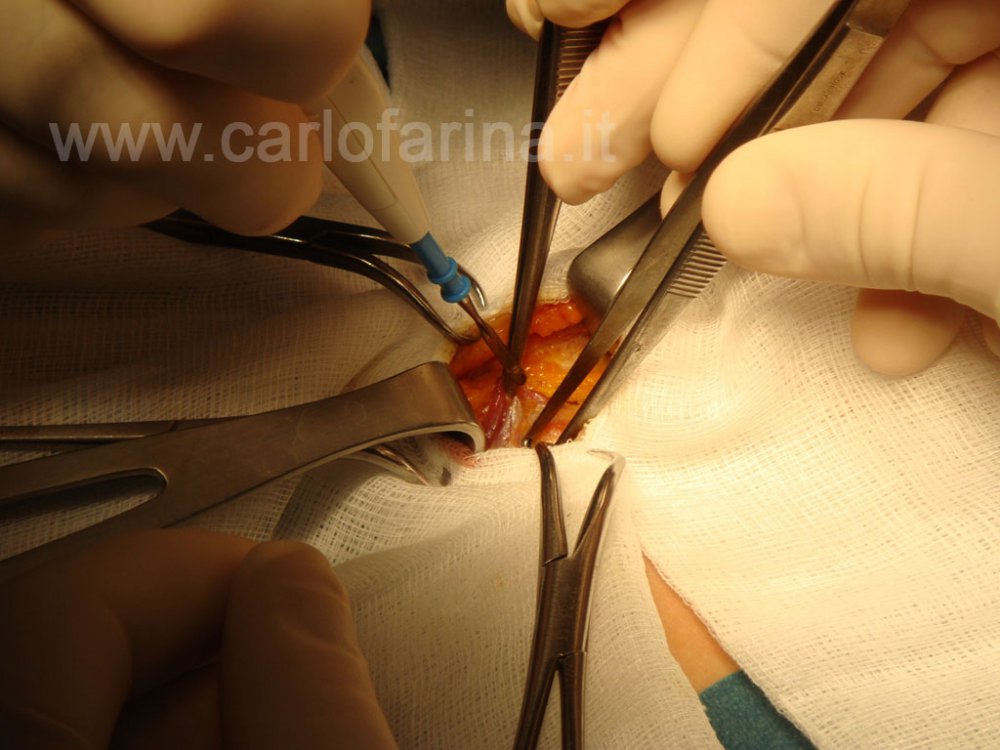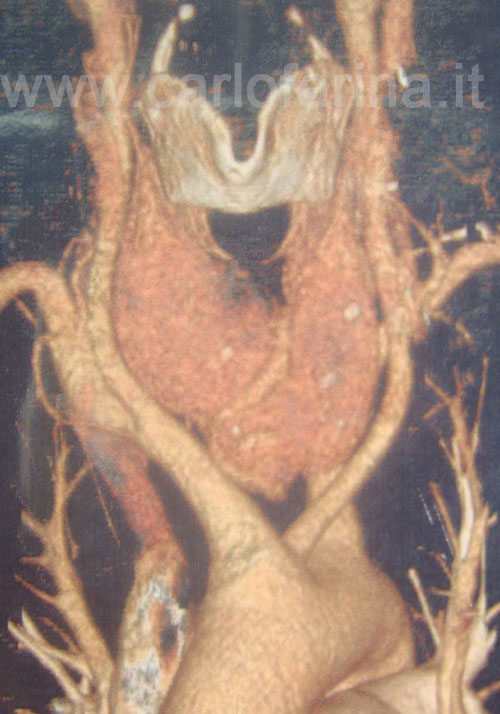For goiter is generally a volume increase in thyroid gland. Sometimes the gland is of normal size and shape but contains nodules or cysts that need to be studied to determine whether medical or surgical therapy is required.
INDEX: 1. WHAT IS THE GOITER AND WHICH ARE THE CAUSES 2. SURGICAL TECHNIQUES 2.1. MINI-thyroidectomy 2.2. TYROIDECTOMY LESS INVASIVE OR MIVAT 3. GENERAL INFORMATION AFTER THE TYROIDECTOMY OPERATION 1. WHAT IS THE GOITER AND WHICH ARE THE CAUSES For goiter is generally a volume increase in thyroid gland. The causes are many and may occur when the function of the gland is normal (ejacidal goiter) and when it produces too many thyroid hormones such as hyperthyroidism or when it produces too few such as in hypothyroidism. Increased volume may be caused by a single thyroid area or, more frequently, by more nodules. Hence the terms of uninodulating gland and multinodular gozzo. The goiter may be made up of vacuoles or cysts filled with a gelatinous substance called colloid that determine the so-called colloid-cyst goiter. This is in most cases of benign disease, but one of the nodules may sometimes contain cancerous cells that are easily highlighted with a simple needle aspirate. Like all thyroid diseases are treated by endocrinologists and are sent to the surgeon in the following cases: - They do not respond to medical therapies - excessive volume growth of the thyroid pushes and diverts the trachea or drops into the chest (swollen goiter) - Susceptible cells for tumor are detected in the smoker's eye. 2. SURGICAL TECHNIQUES The type of surgery in these cases involves the removal of the whole thyroid gland (thyroidectomy) as the removal of only half the gland (thyroid lobectomy or emitiroidectomy) is subject to frequent resumption of disease in the residual thyroid lobe and is reserved only to Particular cases. 2.1. MINI-thyroidectomy The intervention consists in the removal of the entire thyroid gland. For years I have always performed a miniincision of about three to four cm, a so-called minicervicotomy. Even without the help of particular optics and instrumentation, there is no longer any need to perform the large engravings of a time. With the due caution you first remove a lobe then the other one. I have a casu of hundreds of cases performed with this technique that However, comes from my experience of mini-invasive surgery. The continued research in performing the minimal trauma for the patient has led me to develop the mini-invasive technique for almost all the pathologies. At the end of the intervention I insert a drainage that will be removed after about 24 hours. The shelter is about two nights. There are no points to remove because the suture is intradermal, the wound is sealed with impermeable cerotines. After three days you can take a shower following the warnings in the general information sheet after the operation. 2.2 TYROIDECTOMY MINIMUM INVASIVE OR MIVAT It consists in removing the entire thyroid through an incision of 2.5 cm with the use of particular optics and instruments. 3. GENERAL INFORMATION AFTER OPERATION OF MINI-TIROIDECTOMIA by Dr. Carlo Farina The surgery was carried out in general anesthesia, practicing an incision over the bowl of about 2-5 cm. Generally the hospitalization is 3-4 days. The wound has been closed with intradermal, absorbable points that are not visible outside and do not need to be removed. Drains have also been extracted. Some waterproof patches cover the wound and allow you to shower after 3 days of operation. On the day of discharge you can go home, accompany you and have a regular life. To drive, it is advisable to wait about 7 to 10 days, when it will move your head more smoothly. For the first few days, you should have a light diet and drink at least 2 liters of liquid per day. It must strictly observe the attached therapy, perform control tests (T3, T4, TSH, Calcium, Phosphorus Paratormone) after about 10 days, and make arrangements for a visit with its endocrinologist who will decide on any substitution therapy. You may, but do not necessarily observe one of the following situations: • Headache, predominantly nuclide but often extended to the whole head. It is caused by the head position in the operating room. Is treated with common pain relievers and disappears within 2 weeks • Pain, of varying size at the level of the wound, throat and neck, especially during swallowing and at the level of the head. They disappear in about seven days. They are well controlled by painkillers: TORADOL 15-25 full stomach drops when needed). • Decreased voice tone, especially in high tones. It is caused by surgical trauma on the nerves that control the vocal cords. It is generally temporary and is regressed in 3 to 6 months. • Tingling on the arms and face and tremors: It is caused by the decrease in calcium in the blood. It is generally temporary and must be treated promptly with hiring
